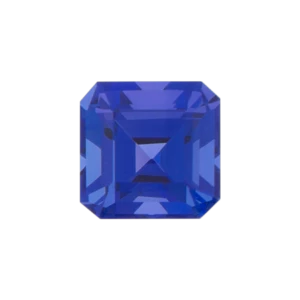Tanzanite
Tanzanite is the name given to the variety of Zoisite which is transparent and endowed with rich blue-purple colors. The gem was discovered in Tanzania in 1967 by famous New York jeweler Louis Comfort Tiffany and was named after the country of its origin, Tanzania.
Tanzanite: general data
Tanzanite, also called blue zoisite, is a rare stone with a translucent luster, the only deposit of which is located on Mount Kilimanjaro, in Tanzania. It is a powerful symbol of self-fulfillment and spirituality.
In addition, tanzanite is a relatively fragile stone; it is in any case softer than sapphire, for example. This stone is associated with creativity and imagination.
Tanzanite: history and origin
Ancient peoples used to name natural stones in a simple way, often according to their colors or physical characteristics.
The name tanzanite comes from the country Tanzania in reference to the place of its first discovery.
The stone was discovered in 1954 by the Maasai, a semi-nomadic herders and hunters, mainly based between Kenya and Tanzania.
It is said that following a bush fire that devastated the surrounding savannah, a group of Maasai warriors discovered the blue and shining gems on the ground, as a sign of fate.
In fact, tanzanite originally brown in color turns deep blue when heated to over 500 ° C. This is how what they believed to be a common pebble turned into a precious stone.
Nowadays we also find tanzanite under the name of blue zoisite.
Natural Tanzanite and its composition
Natural tanzanite is a variety of zoisite stone with a very specific composition and a high content of vanadium. It is this chemical element that causes a change in color when the stone is heated.
It is naturally found in its blue form in only one place, namely Mount Kilimanjaro. Indeed, this area with strong volcanic activity exposes the surrounding rocks to high temperatures.
In 1954 zoisite was already a known stone and introduced into the mineralogical classification by the geologist Sigmund Zois in 1805.
Impossible to identify, the blue gem was sent to renowned gemologists in the United States, at the Gemological Institute of America. After a battery of tests, we had to face the facts, it was a variety of zoisite unknown until now.
A few years later, it was the turn of the famous high-end jewelry brand Tiffany to crack on the rare blue stone. It is the owner of the mark who gave his name to the stone in reference to his country of origin and it is also he who made known the stone with his magnificent creations.
Tanzanite in lithotherapy
In lithotherapy, this precious natural mineral tanzanite is associated with creativity and imagination, which makes it the best ally of artists. It would increase intellectual curiosity, artistic creativity and literary talent, but also humor. It would therefore act on the brain and the senses: it would also be very beneficial for sight and hearing. Stimulating extrasensory perceptions and intuitive qualities, it would facilitate spiritual research and meditation.
It is associated with the astrological signs of Aquarius, Gemini, Aries, Pisces, but especially Capricorn, since it is the stone of the natives of the month of December. It is also the symbol of the 24th wedding anniversary.
Virtues and properties of Tanzanite psychologically speaking
Action on soul and spirit
It offers spiritual benefits to its wearer by helping it in its search to achieve greatness of soul and spirit. Developing sensory perceptions and intuition, it is considered the mineral of spiritual upliftment, acting with tact and gentleness to accompany the mind on the path to acquiring wisdom. There is even a variety called “Cat’s Eye”, which is credited with the ability to find light in darkness and which is said to bring intuition and clairvoyance.
Emotional action
As for its action on the emotional level, it is considered as the corollary of its action on the spiritual level: it would awaken the noblest feelings and idealistic aspirations.
Highly prized by artists for its stimulating influence on the imagination and creativity, it is known to help create art in all its forms, whether it be music, painting or literature.
Synonymous with renewal, this gem pushes the individual to surpass themselves and encourages them to move forward.
It is also considered a stone for stimulating curiosity, and helping to overcome inspiration pains and memory loss. Revealing the noblest characteristics and aspirations of an individual’s personality, it is the mineral of self-fulfillment and idealistic and selfless dreams. It confers the strength to stand up for one’s ideas and speak the truth in a conflicted environment.
Virtues and properties of Tanzanite physically speaking
Echoing its psychological benefits, its ability is also proven to activate the brain on the physical level; il also fights against physical weaknesses related to the senses such as hearing and sight. It is associated with the upper chakras, which are located at the level of the throat, the eyes and the top of the head.
As a mineral of renewal, it participates in the regeneration of the body by harmonizing the connection between various exchanges, and promotes better irrigation of the nervous system.
As a result of this regenerative feature, it is also attributed soothing properties with regard to stomach aches (stomach and digestive system), but also the renal system. Physically speaking (body), the stone acts on the skeleton and the skin by promoting the regeneration of cells.





